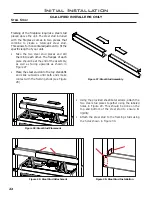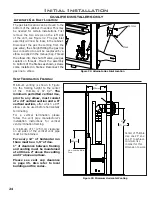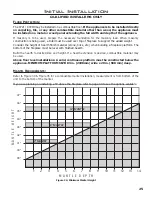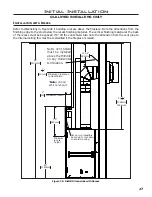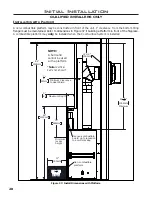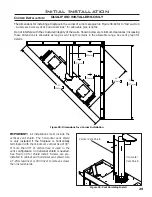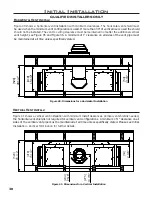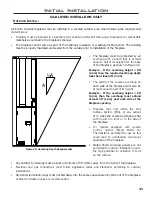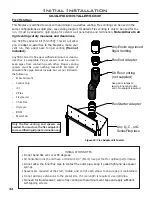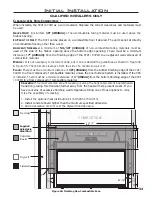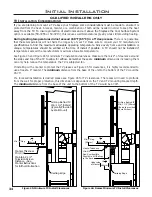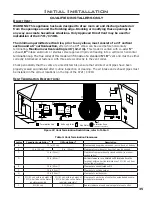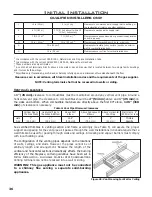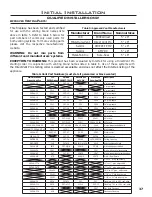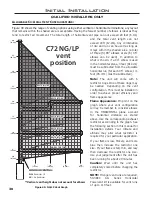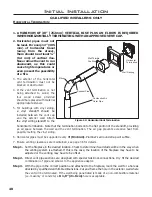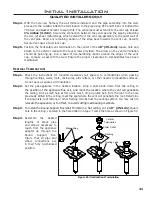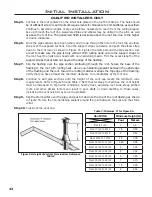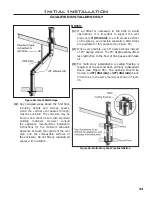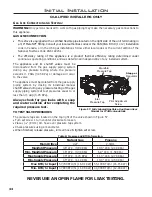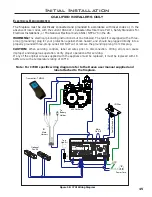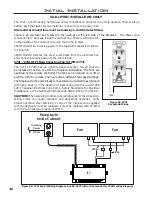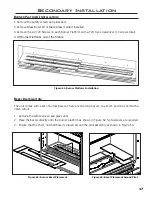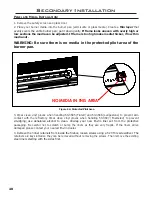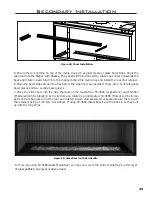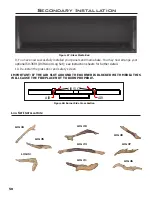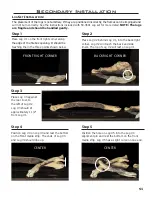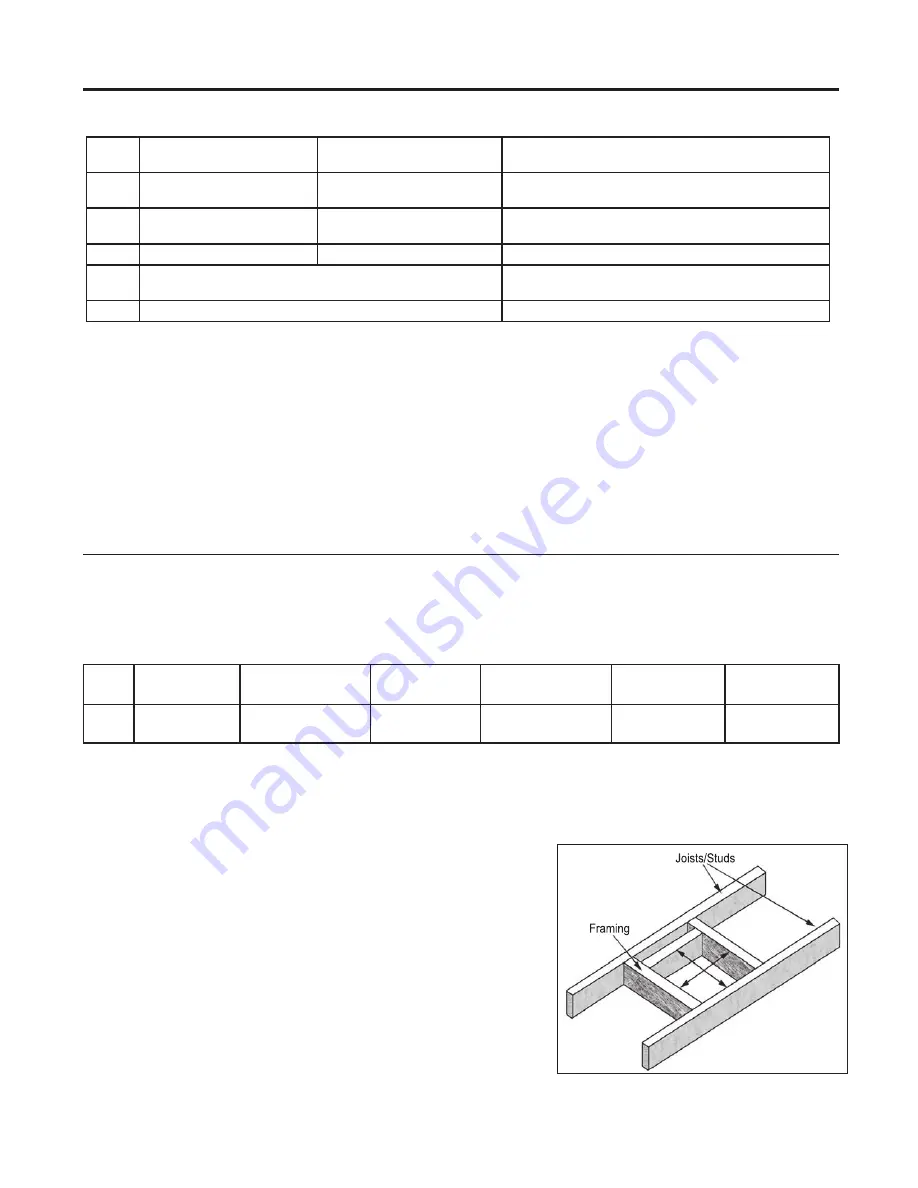
36
Initial Installation
QUALIFIED INSTALLERS ONLY
J
12 in (30 cm)
9 in (23 cm)
Clearance to non-mechanical air supply inlet to building, or
the combustion air inlet to any other appliance.
K
6 ft (1.83 m)
3 ft (91 cm) above if within 10
ft (3 m) horizontally
Clearance to mechanical air supply inlet.
L
7 ft (2.13 m)t
7 ft (2.13 m)*t
Clearance above paved sidewalk or paved driveway located
on public property.
M
12 in / 30 cm+
12 in / 30 cm*+
Clearance under verandah, porch, deck, or balcony.
N
12 in (30 cm)*
Clearance horizontally to any surface (such as an exterior
wall) for vertical terminations.
O
12 in (30 cm)
Clearance above roof line for vertical terminations.
1 In accordance with the current CSA B149.1, Natural Gas and Propane Installation Code.
2 In accordance with the current ANSI Z223.1 NFPA 54, National Fuel Gas Code.
* These numbers are only estimates.
t A vent shall not terminate directly above a side walk or paved driveway that is located between two single family dwellings
and it serves both dwellings.
+
Permitted only if verandah, porch, deck, or balcony is fully open on a minimum of two sides beneath the floor.
Clearances are in accordance with local installation codes and the requirements of the gas supplier.
NOTE: Venting terminals shall not be recessed into walls or siding.
V
enting
c
LeaRances
:
A 1” (25 mm) clearance to combustibles must be maintained around any vertical vent pipe. Around a
horizontal vent pipe, the clearance to combustibles should be 2” (51 mm) above and 1” (25 mm) on
the sides and bottom. When combustible materials are directly above the first 90°
elbow, 12�5” (318
mm) of clearance is necessary.
Vertical Pipe to
the Side Walls
Horizontal Pipe to
the Sides & Bottom
Above First
Elbow
Above Subsequent
Elbows
Above Horizontal
Vent Pipe
Wall Frame 8”
(203mm) or less
Hard
Pipe
1”
(25.4 mm)
1”
(25.4 mm)
12.5”
(318 mm)
3”
(76.2 mm)
2”
(51 mm)
Thimble
Specific
See certified thimbles in venting section and
frame accordingly (see Table 6) will assure the proper
support and spacing for the vent pipe as it passes through the wall. Installations in Canada require that a
wall thimble be used for passing through walls and ceilings. All sealing and vapour barriers must comply
with local building codes.
The configuration of the venting pipes depends on the locations
of walls, ceilings, and studs. However, the pipes cannot be of
arbitrary length and arrangement. Because the length of the
vertical and horizontal sections dramatically affects the burning
efficiency of the fireplace, certain guidelines have been set
in
I
nItIal
I
nstallatIon
- a
llowaBle
c
o
-a
xIal
V
ent
c
onfIguratIons
.
Venting terminals can not be recessed into a wall or siding.
WARNING: This gas appliance must not be connected
to a chimney flue serving a separate solid-burning
appliances.
x”
x”
Figure 48: Vent Framing For Wall or Ceiling
Table 4:
Vent Pipe Minimum Clearances
Summary of Contents for C72I
Page 55: ...55 Parts Diagram 1 2 3 4 5 6 9 7 8 12 13 14 10 15 15 ...
Page 57: ...57 Notes ...
Page 58: ...58 Notes ...

